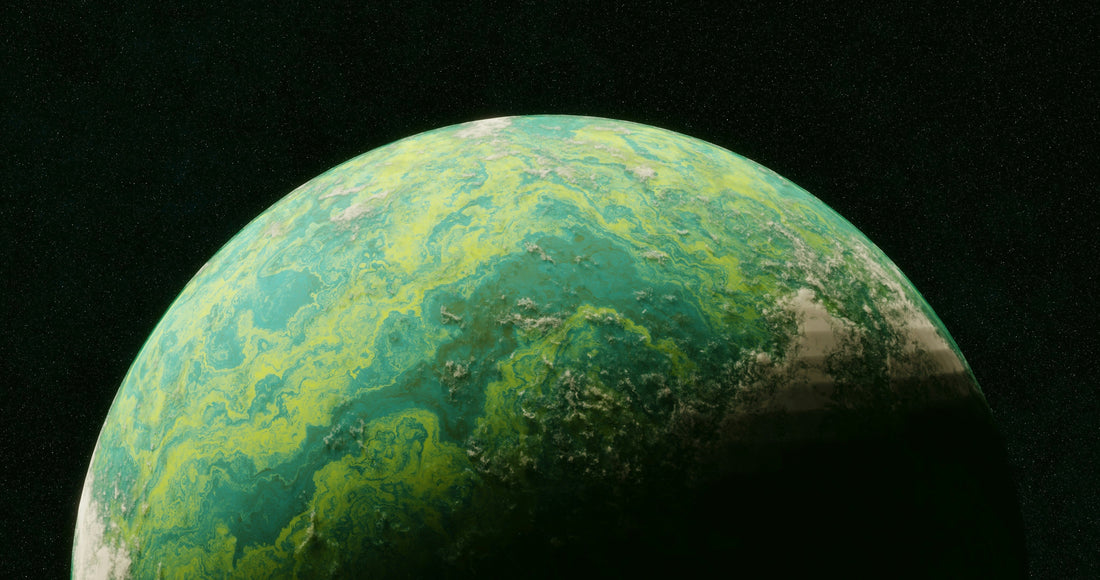Items added to your cart
Size:

When we look at images from space, we are dazzled by swirls of purple, blue, orange, and green. From the breathtaking hues of nebulae to the glowing surface of distant planets, outer space seems bursting with color. But is that what astronauts really see when they leave Earth? The answer lies in the science of light, human vision, and what actually happens when we step into the cosmic dark.
To understand what astronauts see in space, we first need to understand how color works. Color is not an object. It is the result of light interacting with the surfaces of things and how our eyes and brains process those wavelengths of light. On Earth, the sun emits white light which contains every color in the visible spectrum. When this light hits an object, certain wavelengths are absorbed and others are reflected. The ones that reflect reach our eyes and give the object its color.
For example, a leaf looks green because it reflects green light and absorbs the rest. The sky looks blue because of Rayleigh scattering, a process where air molecules scatter shorter blue wavelengths more than red ones. But in space, there is no atmosphere to scatter light, which means the sky does not appear blue. Instead, space appears as a deep black void.
So, do astronauts see all the colors we see in NASA photos? The answer is yes and no. Astronauts see planets, stars, and Earth in beautiful clarity. Earth is especially vibrant from space, with oceans showing up as deep blues, deserts as soft tans, and cloud systems in bright white spirals. The International Space Station orbits above the atmosphere, giving astronauts a crystal-clear view of these features.
However, the rest of space remains stark and dark. Stars look like sharp, unmoving points of white light. There are no twinkling effects, because there is no air to distort the light. Many celestial objects like nebulae or distant galaxies do not emit enough visible light to be seen with the naked eye. That is why astronauts often do not see the bright colors we see in photos. Those images are usually taken by telescopes that capture light beyond the visible spectrum.
The Role of Space Photography
Much of the color we associate with space comes from enhanced or composite images. Telescopes like Hubble detect ultraviolet and infrared light, which humans cannot see. Scientists assign colors to those invisible wavelengths to help visualize what is going on. For instance, hydrogen might be shown in red, while oxygen appears green. These “false-color” images help astronomers study composition, temperature, and structure. They are scientifically valuable and stunning, but they are not exactly what an astronaut sees.
Even photos taken in visible light often need editing. Cameras in space deal with very harsh lighting conditions, with no atmosphere to soften shadows or reflect ambient light. Brightness levels must be adjusted to mimic what the human eye would perceive on Earth. This gives us an artistic yet informative view of space, though not always a literal one.
Colors From Cosmic Rays
Interestingly, some astronauts have reported seeing flashes of light even when their eyes were closed. These are called cosmic ray visual phenomena. High-energy particles from space occasionally pass through the retina, causing visual flashes or streaks. These are not actual colors in space but are created inside the astronaut’s eye or brain. While fascinating, they are more of a biological response than a visual representation of space.
The surface of the Moon looks gray and dusty, which is exactly how it appears in person. During the Apollo missions, astronauts described the Moon as dull and colorless, except for subtle variations in gray shades. However, Earth, seen from the Moon’s surface, was described as breathtaking. Its rich colors stood out boldly against the black sky, reinforcing just how unique our planet is.
Can You See a Rainbow in Space?
Rainbows rely on sunlight passing through water droplets in the atmosphere, refracting and splitting into a spectrum of colors. Since space lacks both water droplets and atmosphere, traditional rainbows cannot form. However, astronauts on the International Space Station have observed a type of halo or arc when sunlight passes through ice crystals or windows on the station, sometimes producing a rainbow-like effect under specific conditions.
Earth’s Color in Contrast
Astronauts consistently describe Earth as the most colorful object in space. Suspended in darkness, its blues, greens, and whites contrast powerfully with the blackness beyond. Seeing Earth this way often sparks an emotional response called the “overview effect”—a sense of awe and unity when viewing the planet without borders or divisions. For many astronauts, this is one of the most profound visual experiences of space travel.
Why This Matters
Understanding how we see color in space helps us learn about perception, physics, and astronomy. It shows us that many of the dazzling cosmic colors we enjoy are not directly visible, but are interpreted through science and technology. It also reminds us how unique Earth is, with its rich palette made possible by atmosphere, sunlight, and life.
So, can we really see colors in space? Yes, but not in the way photos often suggest. Space is mostly black and colorless to the naked eye, aside from Earth, stars, and planets. What astronauts see is shaped by physics, light, and their unique viewpoint above the atmosphere. The true colors of space are revealed through science, and their beauty lies not just in how they appear, but in what they teach us.

